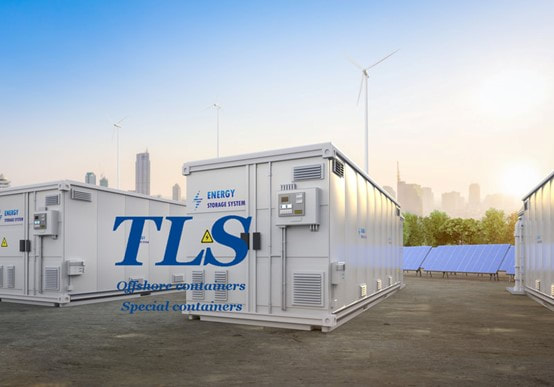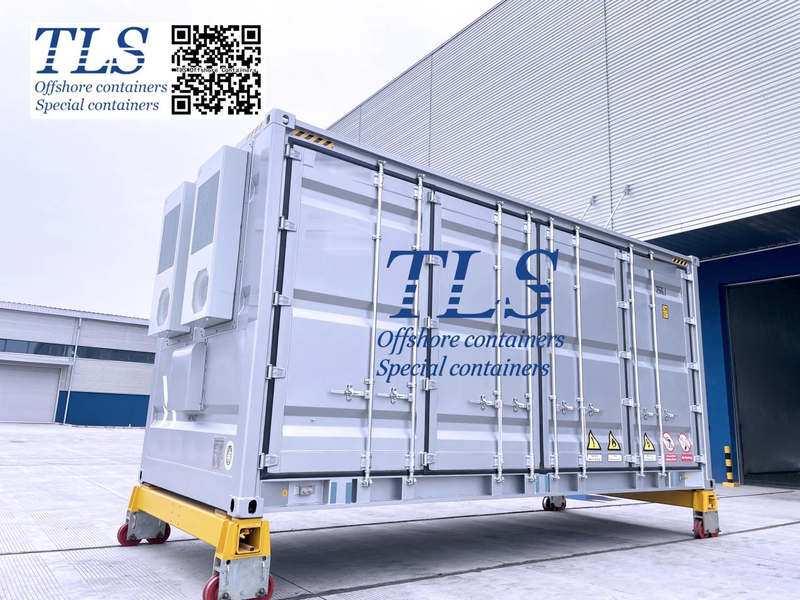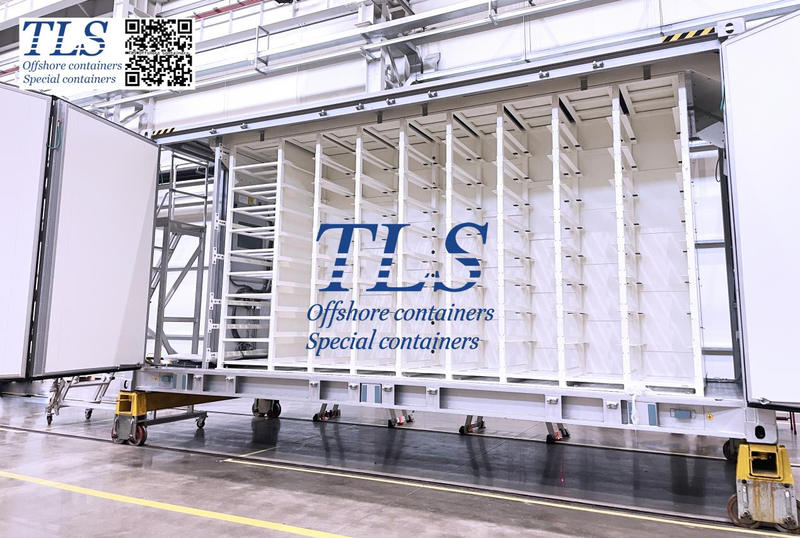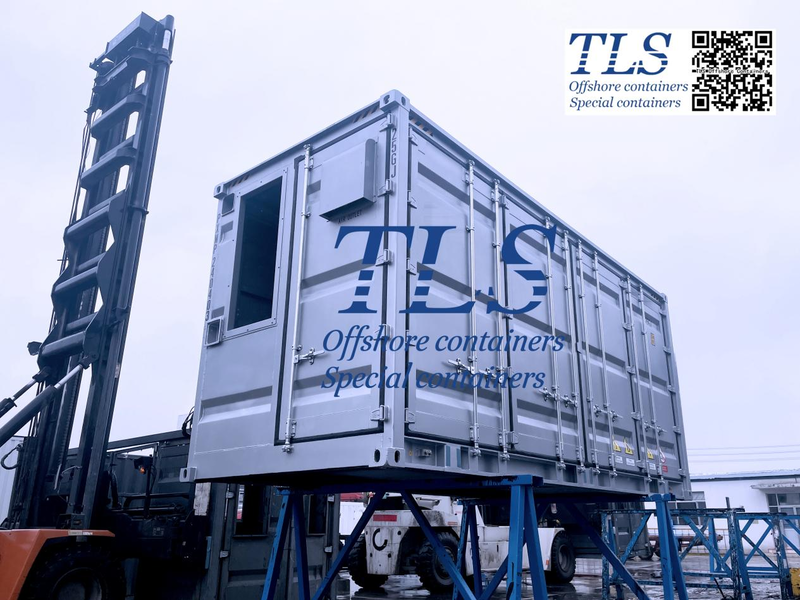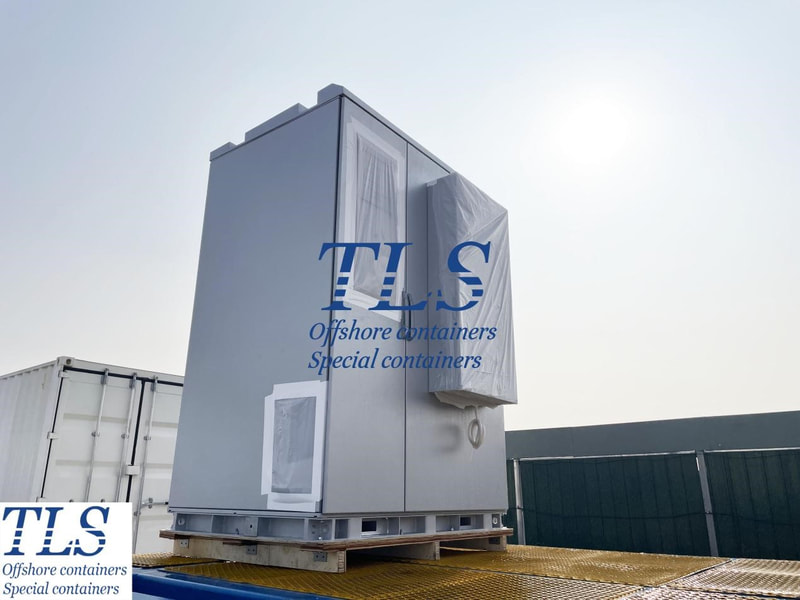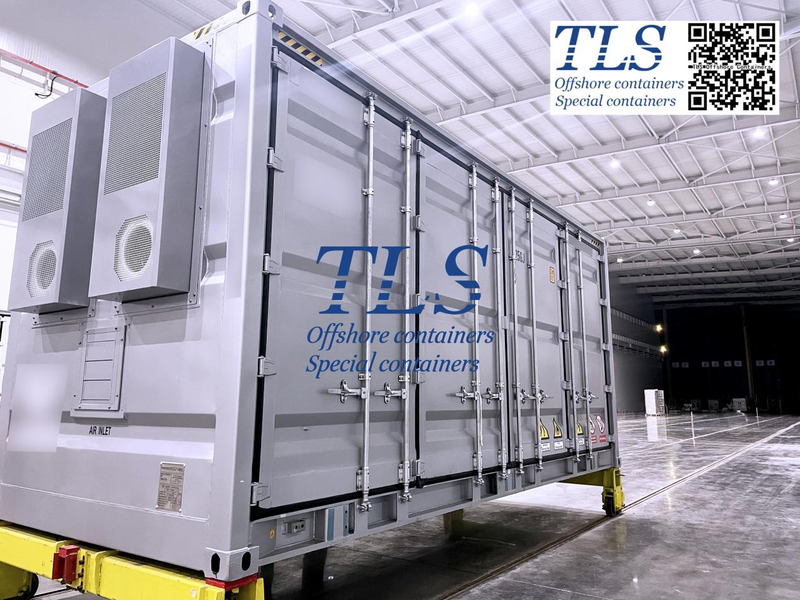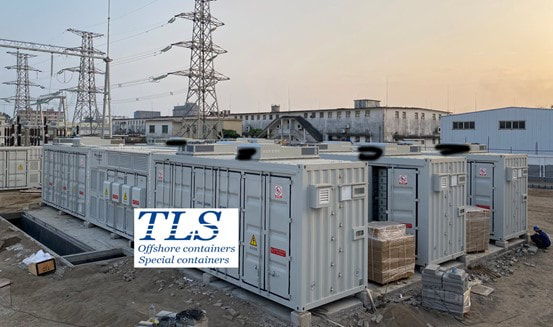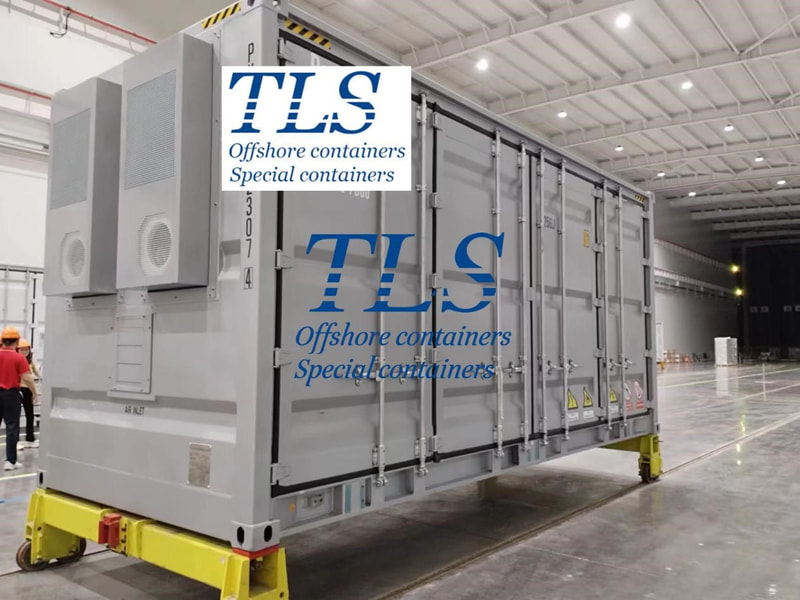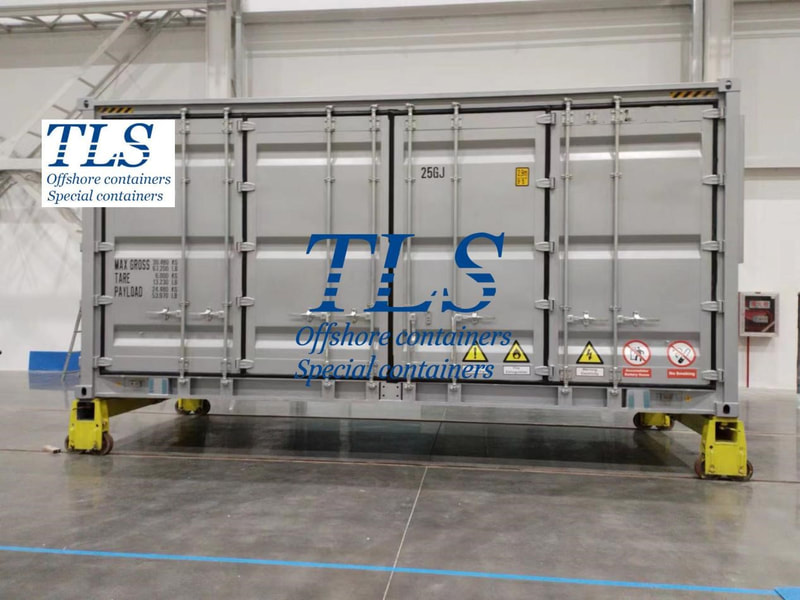Revolutionizing Energy Storage: Advanced Thermal Management for TLS Air-Cooled BESS Containers7/25/2024
Introduction Battery Energy Storage Systems (BESS) are rapidly becoming essential components of the modern energy landscape. As the demand for reliable, efficient energy storage grows, so does the need for innovative solutions to optimize the performance and longevity of these systems. TLS, a leader in energy storage solutions, is at the forefront of developing advanced thermal management systems specifically for their air-cooled BESS containers. The Importance of Thermal Management in BESS Effective thermal management is crucial for BESS performance for several reasons:
Advanced Thermal Management Systems for TLS Air-Cooled BESS Containers TLS has integrated several cutting-edge technologies into their air-cooled BESS containers to address these thermal challenges:
Benefits of TLS's Approach TLS's advanced thermal management systems offer several key advantages:
The Future of BESS Thermal Management As BESS technology continues to evolve, so too will thermal management systems. TLS is committed to ongoing research and development in this area, with a focus on even more efficient, intelligent, and sustainable solutions. The integration of renewable energy sources and energy storage is transforming the way we power our world, and advanced thermal management plays a vital role in ensuring the success of this energy revolution. Conclusion TLS's advanced thermal management systems for air-cooled BESS containers are a testament to the company's commitment to innovation and energy efficiency. By prioritizing the longevity, performance, and safety of their BESS solutions, TLS is helping to pave the way for a more sustainable and reliable energy future. TLS Offshore Containers / TLS Special Containers is a global supplier of standard and customised containerised solutions. Wherever you are in the world TLS can help you, please contact us. Regarding the Battery Energy Storage System (BESS) container, please download Energy Storage System (ESS) Containers brochure for reference. Keywords: #BESS #battery energy storage systems #thermal management #air-cooled containers #TLS #energy efficiency #battery lifespan #energy storage #renewable energy Written by OliverIntroduction: In the rapidly evolving world of renewable energy, Battery Energy Storage Systems (BESS) are playing a critical role in grid stabilization and the integration of intermittent sources like solar and wind power. At the heart of these advanced BESS solutions lie the Power Conversion System (PCS) and the Battery Management System (BMS). Today, we're shining a spotlight on TLS, a pioneering company in the BESS industry, and the advanced technology behind their PCS and BMS. The PCS: The Powerhouse of the BESS The PCS is the workhorse of any BESS container. It's responsible for converting the direct current (DC) power stored in the batteries into alternating current (AC) power that can be fed into the grid or used to power homes and businesses. TLS's PCS stands out for its:
The BMS: The Brain of the BESS The BMS is the intelligent control system that monitors and manages the health and performance of the batteries within the BESS container. TLS's BMS is a marvel of engineering, offering:
TLS's Commitment to Safety and Reliability Safety is paramount in the design of any BESS container. TLS takes this responsibility seriously, incorporating advanced safety features into both the PCS and BMS:
Conclusion TLS BESS containers are a testament to the power of innovation in the energy storage sector. The advanced PCS and BMS technologies integrated into our systems ensure efficient, reliable, and safe operation. As the world transitions towards a cleaner energy future, companies like TLS are paving the way for a more sustainable and resilient grid. TLS Offshore Containers / TLS Special Containers is a global supplier of standard and customised containerised solutions. Wherever you are in the world TLS can help you, please contact us. Regarding the Battery Energy Storage System (BESS) container, please download Energy Storage System (ESS) Containers brochure for reference. Keywords: #TLS #BESS #Battery Energy Storage System #PCS #Power Conversion System #BMS #Battery Management System #energy storage #renewable energy #grid stability Written by OliverEmpowering Energy Storage with TLS Semi-Integrated BESS Containers: The Future of Sustainable Power7/11/2024
Introduction The global shift towards renewable energy sources like solar and wind power is undeniable. However, their intermittent nature demands efficient energy storage solutions. This is where Battery Energy Storage Systems (BESS) play a crucial role. TLS, a leader in container solutions, has taken BESS technology to the next level with their innovative semi-integrated BESS containers. What are Semi-Integrated BESS Containers? Semi-integrated BESS containers combine the enclosure and some of the core components, such as battery racks and air ducts, in a standard container. This approach streamlines installation and reduces on-site integration complexities. TLS's semi-integrated BESS containers are designed for flexibility, allowing customization to meet specific project requirements. Key Advantages of TLS Semi-Integrated BESS Containers
Applications of TLS Semi-Integrated BESS Containers
Why Choose TLS for Your BESS Needs? TLS has a proven track record in delivering high-quality container solutions for various industries. Their commitment to innovation, quality, and customer satisfaction makes them a trusted partner for your BESS projects. With a global reach and a focus on sustainability, TLS is well-positioned to support the transition towards a cleaner, more reliable energy future. Conclusion TLS's semi-integrated BESS containers represent a significant advancement in energy storage technology. Their flexibility, efficiency, and sustainability make them a compelling choice for a wide range of applications. As the world continues to embrace renewable energy sources, BESS technology will play an increasingly critical role. With TLS as your partner, you can be confident that you're investing in a solution that will empower your energy storage needs and contribute to a more sustainable future. TLS Offshore Containers / TLS Special Containers is a global supplier of standard and customised containerised solutions. Wherever you are in the world TLS can help you, please contact us. Regarding the Battery Energy Storage System (BESS) container, please download Energy Storage System (ESS) Containers brochure for reference. Key words: #semi-integrated BESS container #BESS system #TLS BESS container #sustainable energy storage #solar energy storage #wind energy storage #grid stability #lithium-ion battery #energy transition #TLS container solutions Written by OliverIn the rapidly evolving energy sector, the demand for efficient and reliable Battery Energy Storage Systems (BESS) is at an all-time high. These systems are critical for managing energy flow, ensuring grid stability, and enhancing the integration of renewable energy sources. When it comes to onshore BESS containers, TLS stands out as a leading provider, offering advanced solutions equipped with air cooling and battery racks. Here’s why choosing TLS for your onshore BESS container needs is a smart decision.
1. Cutting-Edge Technology TLS leverages the latest advancements in BESS technology to deliver state-of-the-art solutions. Our onshore BESS containers are designed with precision and equipped with air cooling systems that ensure optimal temperature management. This is crucial for maintaining battery performance and extending the lifespan of the system. The air cooling system effectively dissipates heat, preventing overheating and potential damage to the batteries. 2. Enhanced Safety and Reliability Safety is a paramount concern in the energy storage industry. TLS's onshore BESS containers are engineered with multiple safety features, including robust air cooling systems and advanced battery racks that securely house the batteries. Our designs adhere to stringent safety standards, ensuring reliable operation and minimizing the risk of thermal runaway or other hazardous conditions. 3. Superior Energy Efficiency Efficiency is at the heart of our BESS solutions. TLS’s air cooling system is designed to operate efficiently, reducing energy consumption and operational costs. Our battery racks are engineered to maximize space utilization, allowing for higher energy density and more efficient storage. This means you get more energy storage capacity in a compact and efficient design. 4. Scalability and Flexibility Whether you need a small-scale solution or a large-scale energy storage system, TLS offers scalable BESS containers that can be customized to meet your specific requirements. Our modular designs allow for easy expansion, ensuring that your energy storage solution can grow with your needs. The flexibility of our systems ensures that they can be integrated seamlessly into various applications, from grid support to renewable energy integration. 5. Robust and Durable Design TLS’s onshore BESS containers are built to withstand harsh environmental conditions. Our durable designs ensure long-term reliability and performance, even in the most challenging settings. The air cooling system is designed to operate effectively across a wide range of temperatures, providing consistent performance and protection for the batteries. 6. Comprehensive Support and Service When you choose TLS, you’re not just getting a product; you’re getting a partner committed to your success. We offer comprehensive support and service, from initial consultation and design to installation and maintenance. Our team of experts is always available to provide technical support and ensure that your BESS system operates smoothly and efficiently. 7. Commitment to Sustainability At TLS, we are committed to promoting sustainable energy solutions. Our BESS containers are designed with sustainability in mind, using energy-efficient components and environmentally friendly materials. By choosing TLS, you’re supporting a company dedicated to reducing the carbon footprint and promoting a greener future. Conclusion In the competitive landscape of energy storage solutions, TLS’s onshore BESS containers with air cooling and battery racks stand out for their advanced technology, safety, efficiency, scalability, and robust design. By choosing TLS, you’re investing in a reliable, efficient, and sustainable energy storage solution that will meet your needs now and in the future. Trust TLS to deliver the best in onshore BESS technology and support your journey toward a more sustainable energy future. TLS Offshore Containers / TLS Special Containers is a global supplier of standard and customised containerised solutions. Wherever you are in the world TLS can help you, please contact us. Regarding the Battery Energy Storage System (BESS) container, please download Energy Storage System (ESS) Containers brochure for reference. Key words: #Onshore BESS containers #Battery Energy Storage Systems #TLS BESS solutions #Air cooling BESS #Advanced battery racks #Reliable BESS containers #Safe energy storage systems #Renewable energy integration #Grid stability solutions #Durable BESS containers #Energy storage efficiency #Customized BESS systems #Modular energy storage In today's dynamic energy landscape, harnessing sustainable power sources has become more critical than ever. Among the innovative solutions paving the way forward, solar energy containers stand out as a beacon of off-grid power excellence. In this comprehensive guide, we delve into the workings, applications, and benefits of these revolutionary systems. Understanding Solar Energy Containers Solar energy containers encapsulate cutting-edge technology designed to capture and convert sunlight into usable electricity, particularly in remote or off-grid locations. Comprising solar panels, batteries, inverters, and monitoring systems, these containers offer a self-sustaining power solution. Components of Solar Energy Containers
How Solar Energy Containers Work
Applications of Solar Energy Containers
Benefits of Solar Energy Containers
Conclusion Solar energy containers epitomize the pinnacle of sustainable energy solutions, offering a plethora of benefits across diverse applications. From their renewable energy sourcing to their cost-effectiveness and scalability, these containers represent a transformative force in off-grid power provision. Embracing solar energy containers is not just a step towards energy independence; it's a leap towards a brighter, cleaner future. TLS Offshore Containers / TLS Special Containers is a global supplier of standard and customised containerised solutions. Wherever you are in the world TLS can help you, please contact us. Regarding the Battery Energy Storage System (BESS) container, please download Energy Storage System (ESS) Containers brochure for reference. Key words: #Solar energy containers #Off-grid power solutions #Renewable energy systems #Solar power generation #Sustainable energy solutions #Remote power solutions #Event power solutions #Military power applications #Off-grid energy storage #Solar panel containers Written by OliverIn today's rapidly evolving energy landscape, businesses and industries are seeking innovative solutions to meet their energy storage needs efficiently and sustainably. Enter TLS's semi-integrated Battery Energy Storage System (BESS) container solution – a game-changer in the realm of energy storage. TLS, a leader in energy storage solutions, presents a revolutionary semi-integrated BESS container that combines cutting-edge technology with unmatched flexibility. Let's delve deeper into what makes this solution a game-changer: Unrivaled Integration: The semi-integrated BESS container by TLS offers a comprehensive package tailored to meet diverse energy storage requirements. Equipped with a battery rack and essential auxiliary components, including a fire fighting system, battery cooling system, lighting system, and earthing system, this solution ensures seamless integration and optimal performance. Flexibility Redefined: One of the standout features of TLS's semi-integrated BESS container is its unparalleled flexibility. While providing a complete solution out-of-the-box, it also leaves ample room for further customization based on specific client needs. Whether you require additional components or specialized features, TLS's solution can be tailored to match your unique requirements. Enhanced Safety Measures: Safety is paramount when it comes to energy storage solutions, and TLS leaves no stone unturned in ensuring the highest standards of safety. The inclusion of a fire fighting system and battery cooling system mitigates the risk of overheating or thermal runaway, offering peace of mind to clients concerned about safety. Seamless Scalability: TLS understands that the energy storage needs of businesses evolve over time. That's why their semi-integrated BESS container solution is designed for seamless scalability. Whether you need to expand your storage capacity or integrate advanced technologies in the future, TLS's solution can easily adapt to accommodate your evolving requirements. Sustainable Solution: In an era where sustainability is a top priority, TLS's semi-integrated BESS container stands out as an environmentally friendly solution. By harnessing the power of renewable energy sources and offering efficient energy storage capabilities, TLS enables businesses to reduce their carbon footprint and contribute to a greener future. Why Choose TLS?
In conclusion, TLS's semi-integrated BESS container is more than just a storage solution – it's a catalyst for maximizing energy efficiency, enhancing safety, and driving sustainability. Experience the future of energy storage with TLS today. Get in touch to explore how TLS can empower your business with innovative energy solutions. TLS Offshore Containers / TLS Special Containers is a global supplier of standard and customised containerised solutions. Wherever you are in the world TLS can help you, please contact us. Regarding the Battery Energy Storage System (BESS) container, please download Energy Storage System (ESS) Containers brochure for reference. Key words: #Energy storage solutions #Semi-integrated BESS containers #Battery energy storage system #Customization options #Scalability #Sustainability #Renewable energy #Flexible integration #Efficiency Written by OliverIntroduction: In today's rapidly evolving energy landscape, Battery Energy Storage Systems (BESS) are becoming increasingly critical. BESS containers, specifically designed for safe, efficient, and scalable energy storage, are at the forefront of this revolution. These systems play a pivotal role in enabling sustainable energy solutions, improving grid stability, and enhancing overall energy management. This blog explores the benefits and applications of BESS containers, focusing on key sectors and technologies. What is a BESS Container? A BESS container is a self-contained unit that houses batteries, cooling systems, and necessary electronic controls. These containers are engineered to store electrical energy in the form of chemical energy and release it when needed. The primary components include the battery (which can vary from lithium-ion to lead-acid), a Battery Management System (BMS), and often, thermal management systems to maintain optimal battery temperatures. Key Features and Benefits: 1. Grid Stability and Load Balancing: BESS containers contribute significantly to grid stability by balancing load variations throughout the day. They provide a buffer against fluctuations, enhancing the reliability of power supply systems. 2. Renewable Energy Integration: Integrating renewable energy sources like solar and wind into the power grid is more feasible with BESS containers. They store excess energy generated during peak production times and release it during demand spikes or low production periods. 3. Scalability and Flexibility: One of the primary advantages of BESS containers is their modularity. Systems can be scaled up or down based on energy requirements, providing a flexible solution adaptable to various applications. 4. Enhanced Energy Management: With advanced controls, BESS containers allow for more precise energy management, optimizing the use of generated power and reducing wastage through efficient storage techniques. 5. Emergency Power Supply: In cases of power outages, BESS containers can provide critical backup power, maintaining operations in essential services like hospitals, data centers, and manufacturing facilities. Applications Across Industries:
Conclusion: The adoption of BESS containers is set to grow as the demand for efficient, sustainable, and stable energy solutions increases. With their ability to integrate with renewable energy sources and provide emergency power, BESS containers are reshaping how energy is stored and managed across the globe. As technology advances, we can expect even more innovative applications and efficiencies, making BESS an indispensable part of future energy systems. TLS Offshore Containers / TLS Special Containers is a global supplier of standard and customised containerised solutions. Wherever you are in the world TLS can help you, please contact us. Regarding the Battery Energy Storage System (BESS) container, please download Energy Storage System (ESS) Containers brochure for reference. Key words:#Grid stability solutions #Power storage systems #Sustainable energy storage #Battery cooling systems #Industrial battery storage #Energy efficiency storage #Power conversion storage #Renewable energy batteries #AC and DC energy storage #Commercial energy solutions #Advanced BESS technology #Reliable power storage Written by OliverIntroduction: Battery Energy Storage Systems (BESS) have emerged as vital components in modern energy infrastructure, facilitating renewable energy integration, grid stabilization, and ensuring reliable power supply. Within the BESS container, every component plays a crucial role, and one such component often overlooked is the Bus-bar. In this blog, we delve into the significance of Bus-bars in BESS containers and how they contribute to optimizing energy storage efficiency. Understanding Bus-bars: Bus-bars are metallic strips or bars used to conduct and distribute electrical currents within electrical equipment, such as BESS containers. In the context of BESS, Bus-bars serve as the backbone of the electrical system, connecting various components like batteries, inverters, and transformers. Their primary function is to efficiently transmit high currents with minimal power loss, ensuring the smooth operation of the energy storage system. Importance of Bus-bars in BESS Containers:
Optimizing Bus-bar Design for Enhanced Performance:
Conclusion: In the realm of Battery Energy Storage Systems, Bus-bars play a critical role in ensuring efficient energy transmission, heat dissipation, and system reliability within the container. Understanding the importance of Bus-bars and implementing optimized design practices can significantly enhance the performance, longevity, and cost-effectiveness of BESS installations. As the demand for energy storage continues to grow, investing in high-quality Bus-bar solutions becomes imperative for maximizing the efficiency and sustainability of modern energy infrastructure. By prioritizing Bus-bar optimization in BESS container design and deployment, stakeholders can unlock the full potential of energy storage technologies, paving the way for a cleaner, more resilient energy future. TLS Offshore Containers / TLS Special Containers is a global supplier of standard and customised containerised solutions. Wherever you are in the world TLS can help you, please contact us. Regarding the Battery Energy Storage System (BESS) container, please download Energy Storage System (ESS) Containers brochure for reference. Key words: #Bus-bar design for BESS #Electrical components #Bus-bar optimization techniques #BESS container electrical efficiency #Bus-bar materials #Current distribution in BESS systems #Voltage drop reduction in BESS containers #Bus-bar scalability and flexibility #Thermal management #Bus-bar insulation and protection #Optimizing bus-bars for BESS performance Written by OliverIn the realm of energy storage, Battery Energy Storage Systems (BESS) have emerged as pivotal assets for managing power grids efficiently and sustainably. As the demand for renewable energy integration grows, the importance of efficient BESS operation becomes increasingly evident. Among the critical components of BESS infrastructure is the Energy Management System (EMS), which plays a crucial role in optimizing performance and ensuring seamless integration with the grid. In this blog post, we delve into the intricacies of EMS communication within BESS containers manufactured by TLS, shedding light on its functionality and significance. What is EMS Communication? EMS communication refers to the exchange of data and instructions between the Energy Management System and various components within a BESS container. The EMS serves as the central intelligence hub, orchestrating the operation of batteries, inverters, monitoring devices, and other subsystems to achieve optimal performance objectives. Key Components of EMS Communication in TLS BESS Containers:
Benefits of Effective EMS Communication in TLS BESS Containers:
Conclusion: In the realm of energy storage, effective communication between the EMS and various subsystems is essential for optimizing performance, ensuring grid stability, and maximizing the value of BESS assets. TLS BESS containers exemplify this principle, boasting robust EMS communication capabilities that enable seamless integration, enhanced control, and superior operational efficiency. By leveraging advanced technology and innovative design, TLS continues to redefine the landscape of energy storage, empowering utilities, renewable energy developers, and grid operators to embrace a sustainable energy future. TLS Offshore Containers / TLS Special Containers is a global supplier of standard and customised containerised solutions. Wherever you are in the world TLS can help you, please contact us. Regarding the Battery Energy Storage System (BESS) container, please download Energy Storage System (ESS) Containers brochure for reference. Key words: #Battery Management System (BMS) #Inverters #Grid monitoring #SCADA systems #Performance optimization #Grid stability #Renewable energy integration #Ancillary services #Real-time data #Operational efficiency #Remote management #Predictive analytics #Maintenance scheduling Written by OliverUnveiling the Engineering Marvel: Understanding How the Inverter Works in TLS BESS Containers3/22/2024
Introduction: In today's energy landscape, the importance of sustainable and efficient energy storage solutions cannot be overstated. Battery Energy Storage Systems (BESS) have emerged as a cornerstone of this transformation, providing flexibility, reliability, and stability to the grid. At the heart of every BESS lies a crucial component: the inverter. In this blog, we delve into the intricate workings of the inverter within the BESS containers manufactured by TLS, shedding light on its functionality and significance. Understanding the Inverter: The inverter serves as the backbone of any BESS, facilitating the conversion of direct current (DC) electricity stored in the batteries into alternating current (AC) electricity, which is compatible with the grid and can power homes, businesses, and industries. This seamless conversion process is fundamental for integrating renewable energy sources, managing peak demand, and ensuring grid stability. Key Components and Technologies: Within TLS BESS containers, the inverter comprises a sophisticated array of components and cutting-edge technologies engineered to optimize performance and efficiency. These include:
Benefits of TLS Inverter Technology:
Conclusion: In conclusion, the inverter stands as a linchpin of TLS BESS containers, facilitating the seamless conversion of stored energy into usable electricity while ensuring compatibility with the grid. Through advanced technologies, robust design principles, and adaptive control strategies, TLS continues to pioneer innovative solutions that drive the transition towards a sustainable energy future. As the demand for reliable and efficient energy storage solutions escalates, the role of the inverter within BESS containers remains paramount, shaping the landscape of modern energy infrastructure. TLS Offshore Containers / TLS Special Containers is a global supplier of standard and customised containerised solutions. Wherever you are in the world TLS can help you, please contact us. Regarding the Battery Energy Storage System (BESS) container, please download Energy Storage System (ESS) Containers brochure for reference. Key words: #Inverter technology #Energy storage solutions #Grid integration #Renewable energy #Power electronics #Grid stability #Energy conversion #Efficiency #Control systems #Modularity #Scalability Written by Oliver |
Archives
July 2024
Categories
All
|
- Home
-
Containerised solutions
- Intelligent pressurised container | MUD logging cabin
- Battery energy storage system (BESS) container
- Flexible grid tied battery storage system
- Laboratory container | workshop container | Equipment containers
- Temporary refuge shelter | Toxic gas refuge | Safe haven
- Offshore accommodation cabin | office container
- Reefer container | Refrigerated container
- Intelligent waste water treatment container
- Fresh water generator container
- Cargo Containers
- Product photos & videos
- News & Blogs
- Contact us
|
Featured products
Intelligent pressurised container Temporary refuge (TR) shelter, toxic gas refuge (TGR) Battery energy storage system (BESS) container Containerised waste water treatment plant Fresh water generator container Reefer container Laboratory container, Workshop container Accommodation container Offshore closed container |
All Rights Reserved 2020 © TLS Offshore Containers / TLS Energy
|








